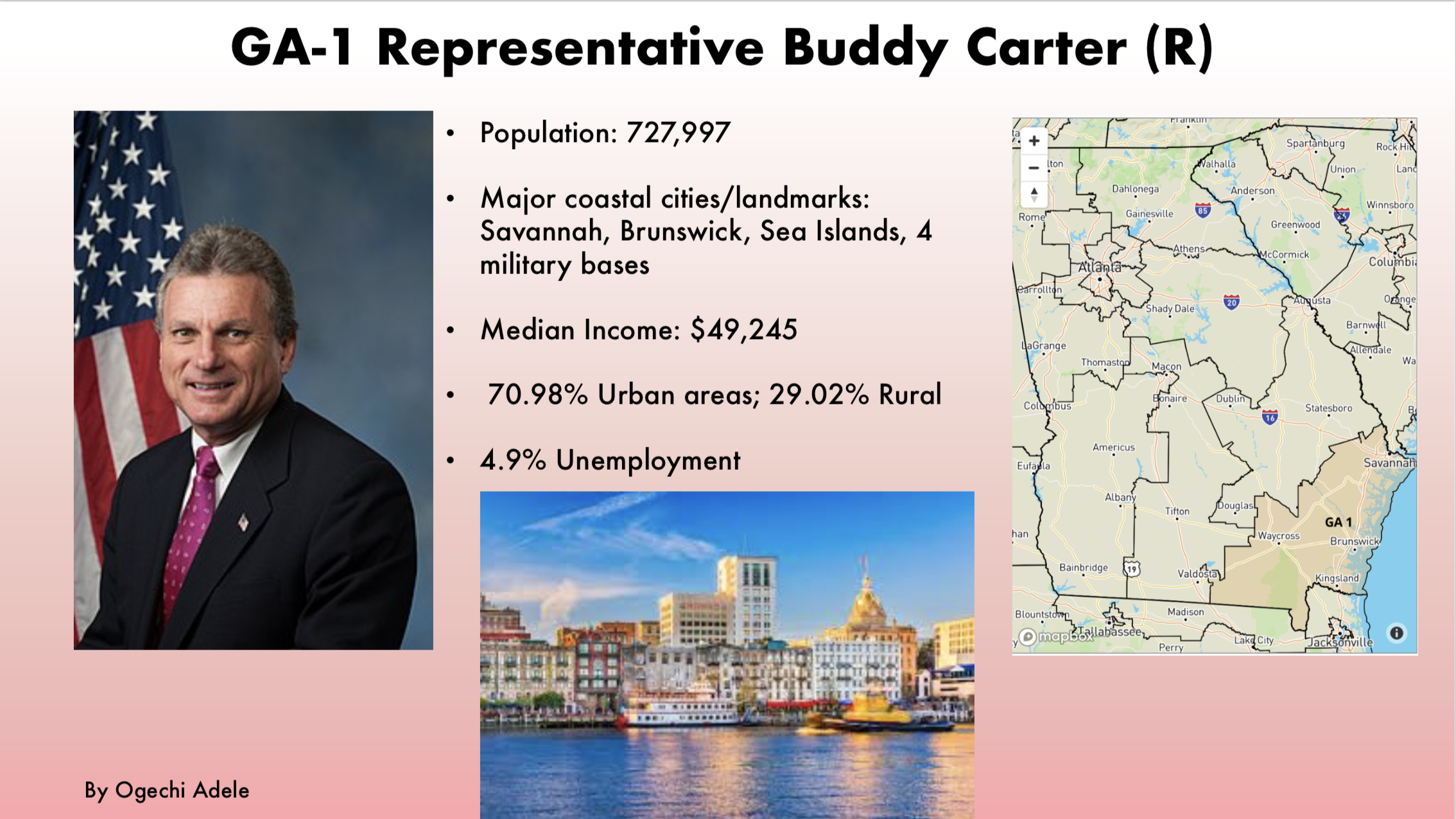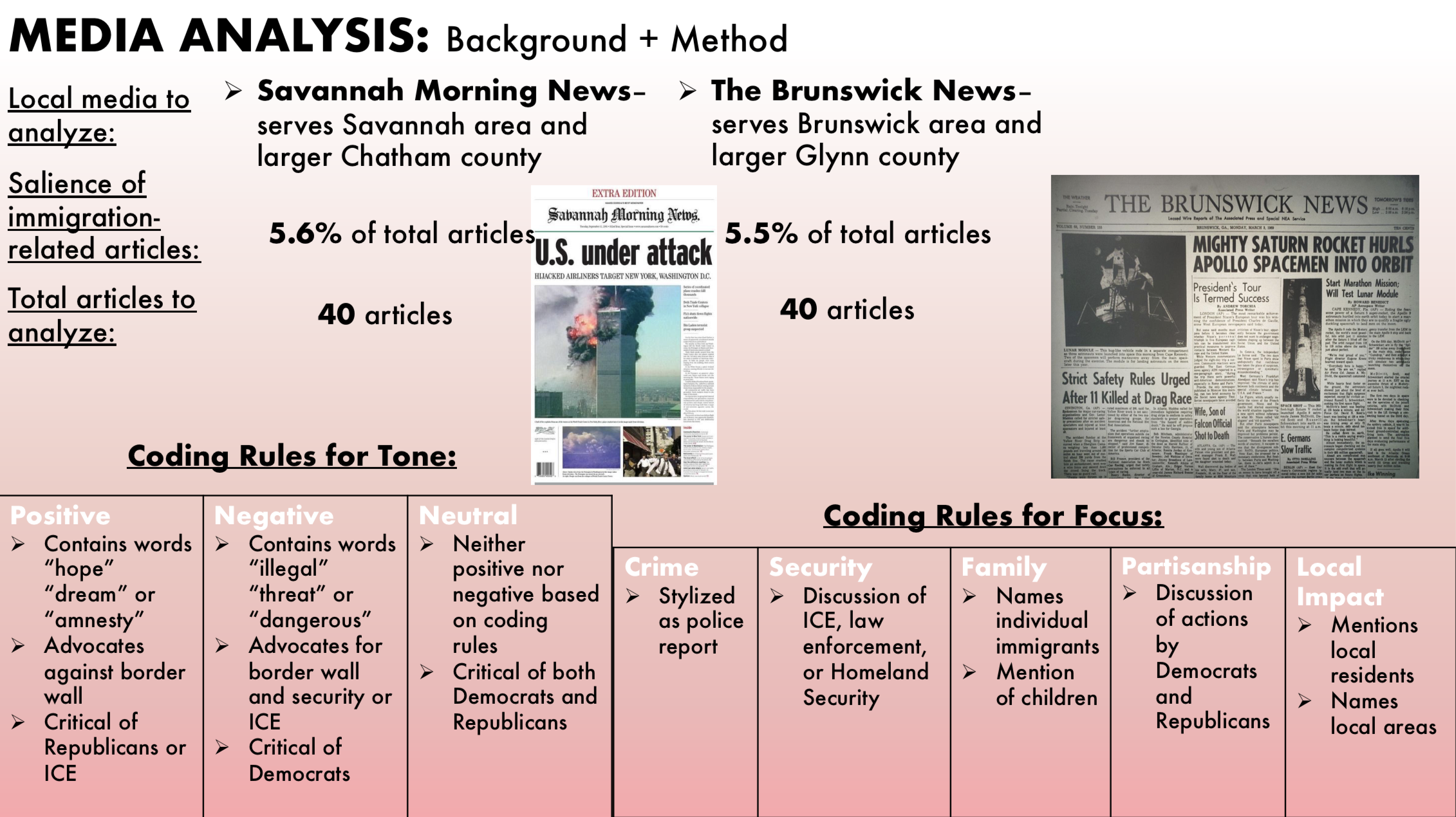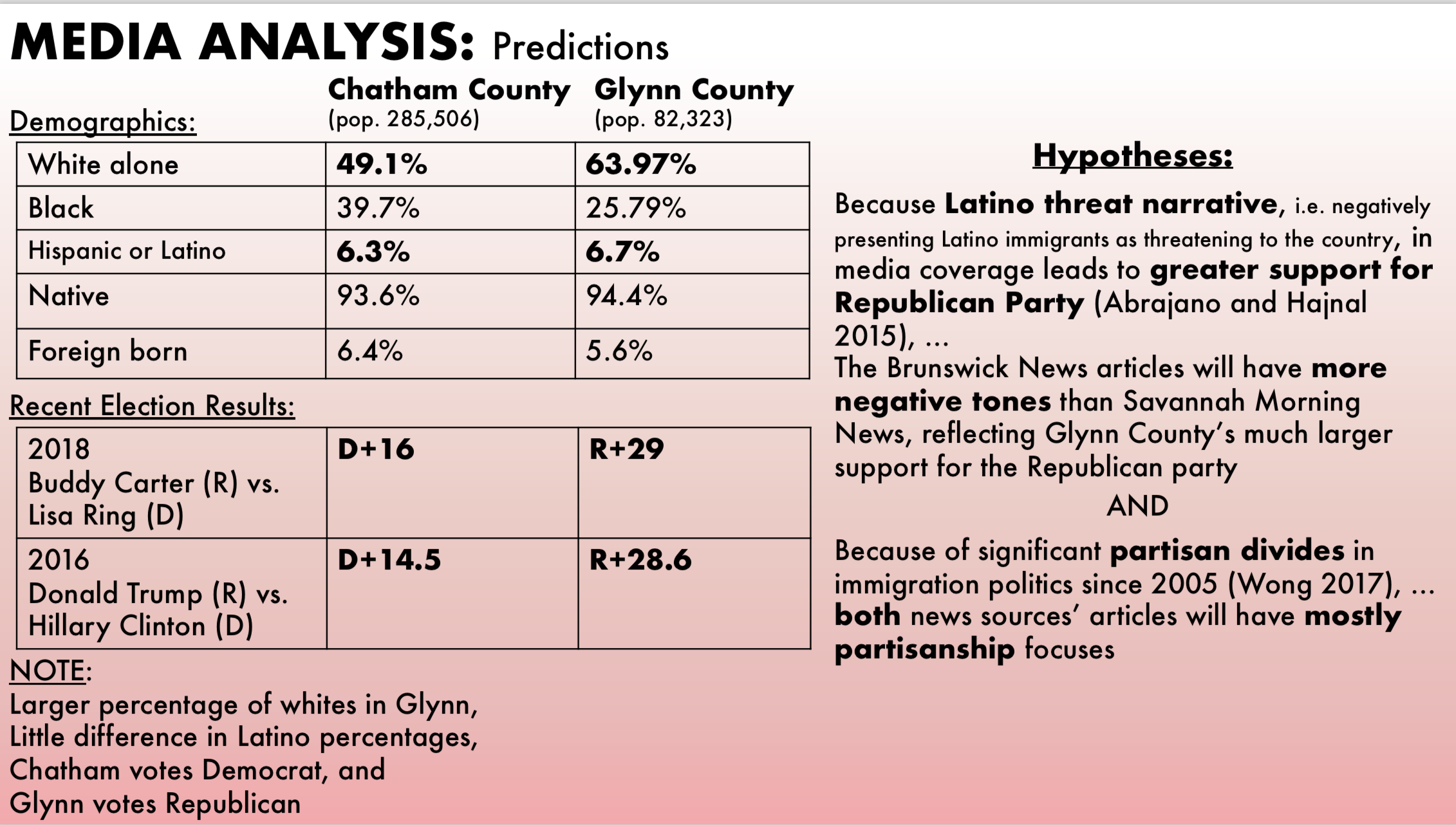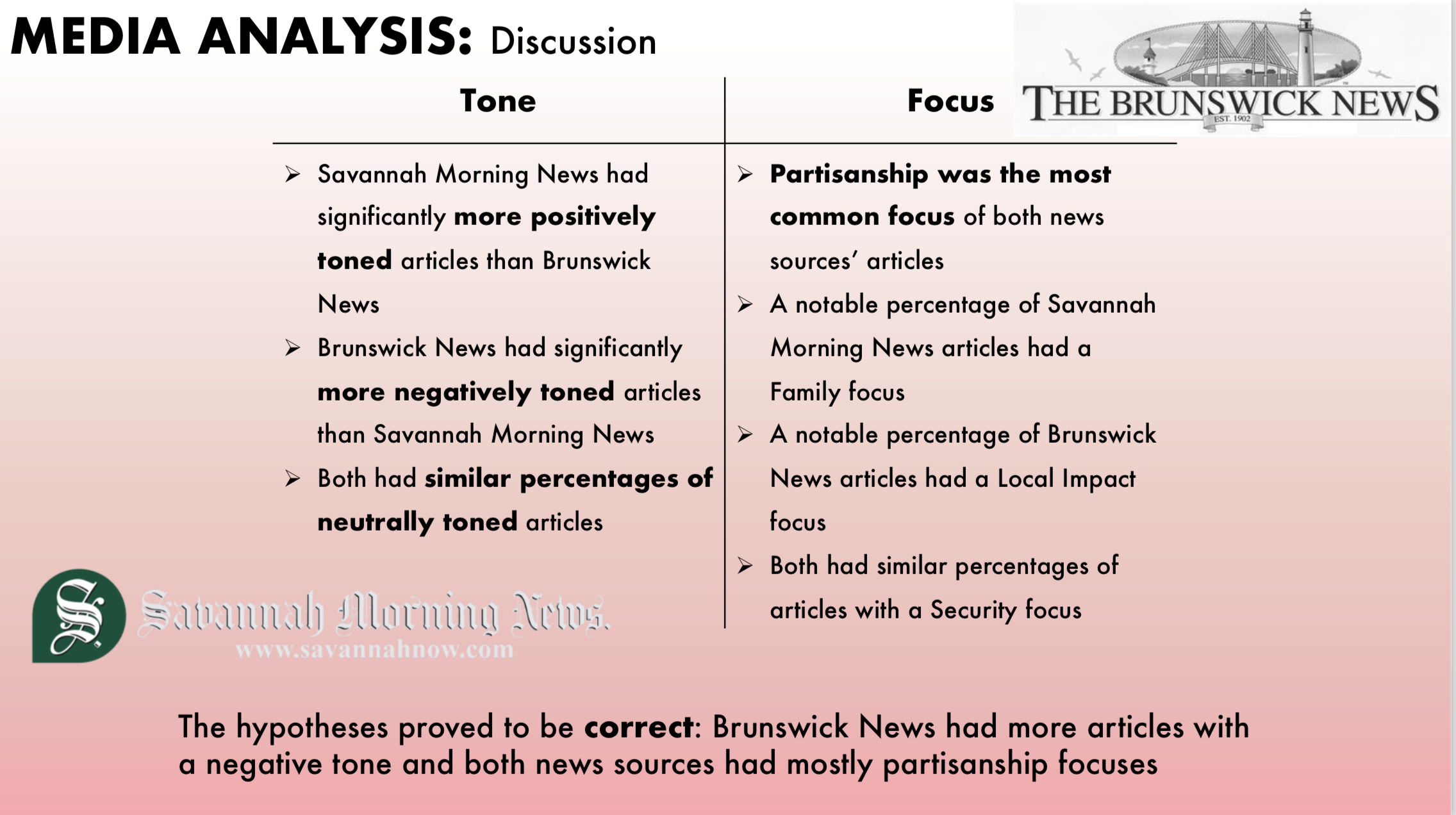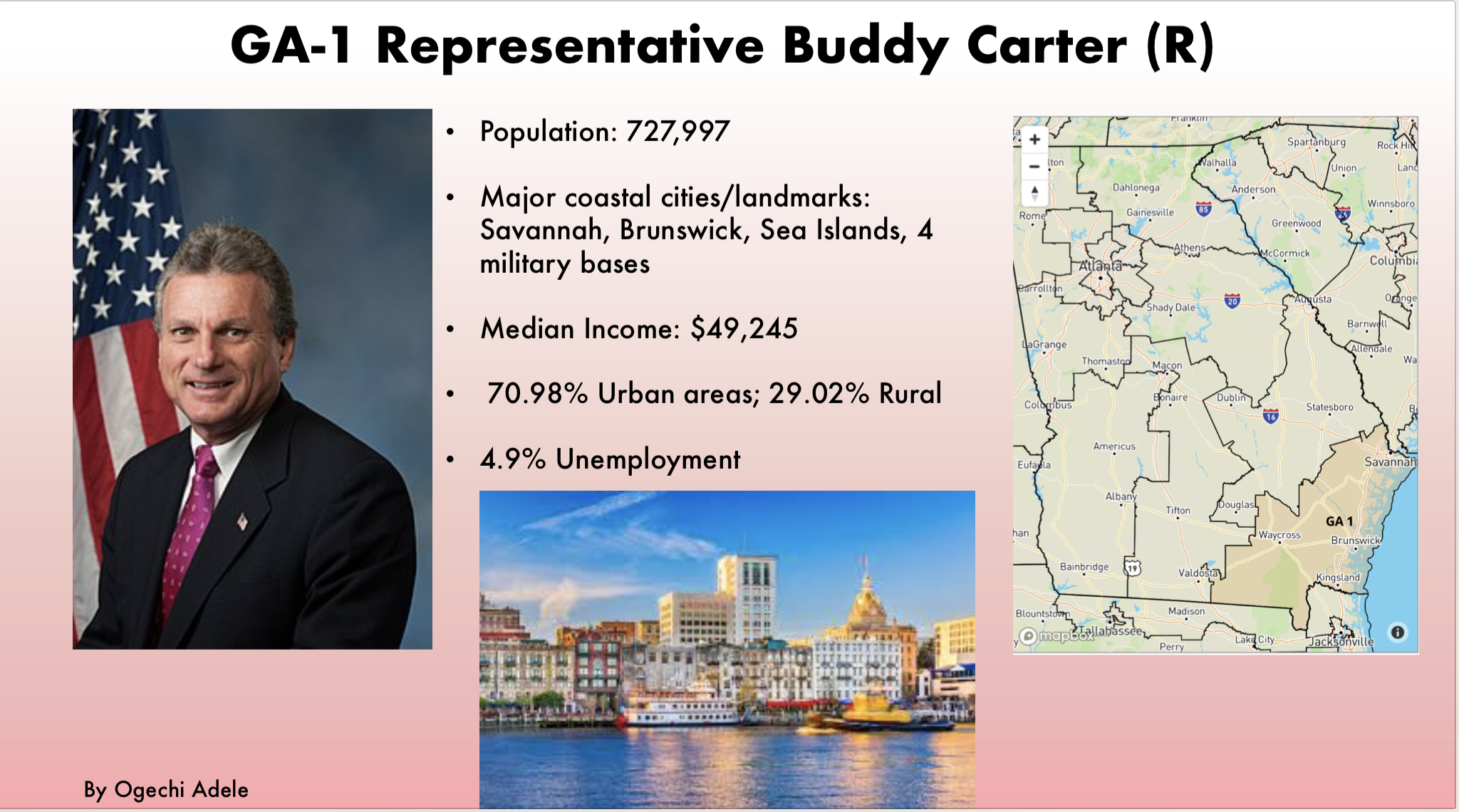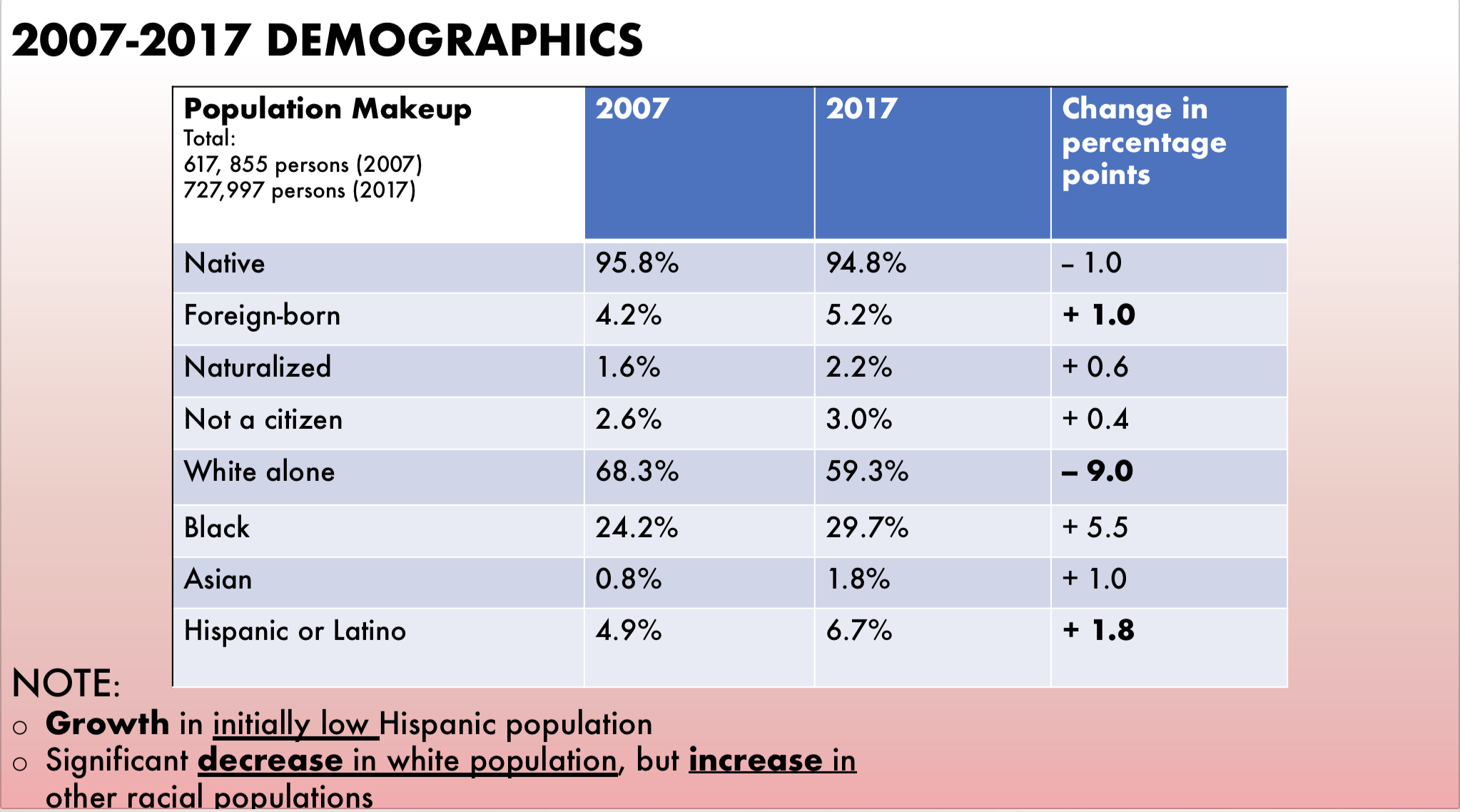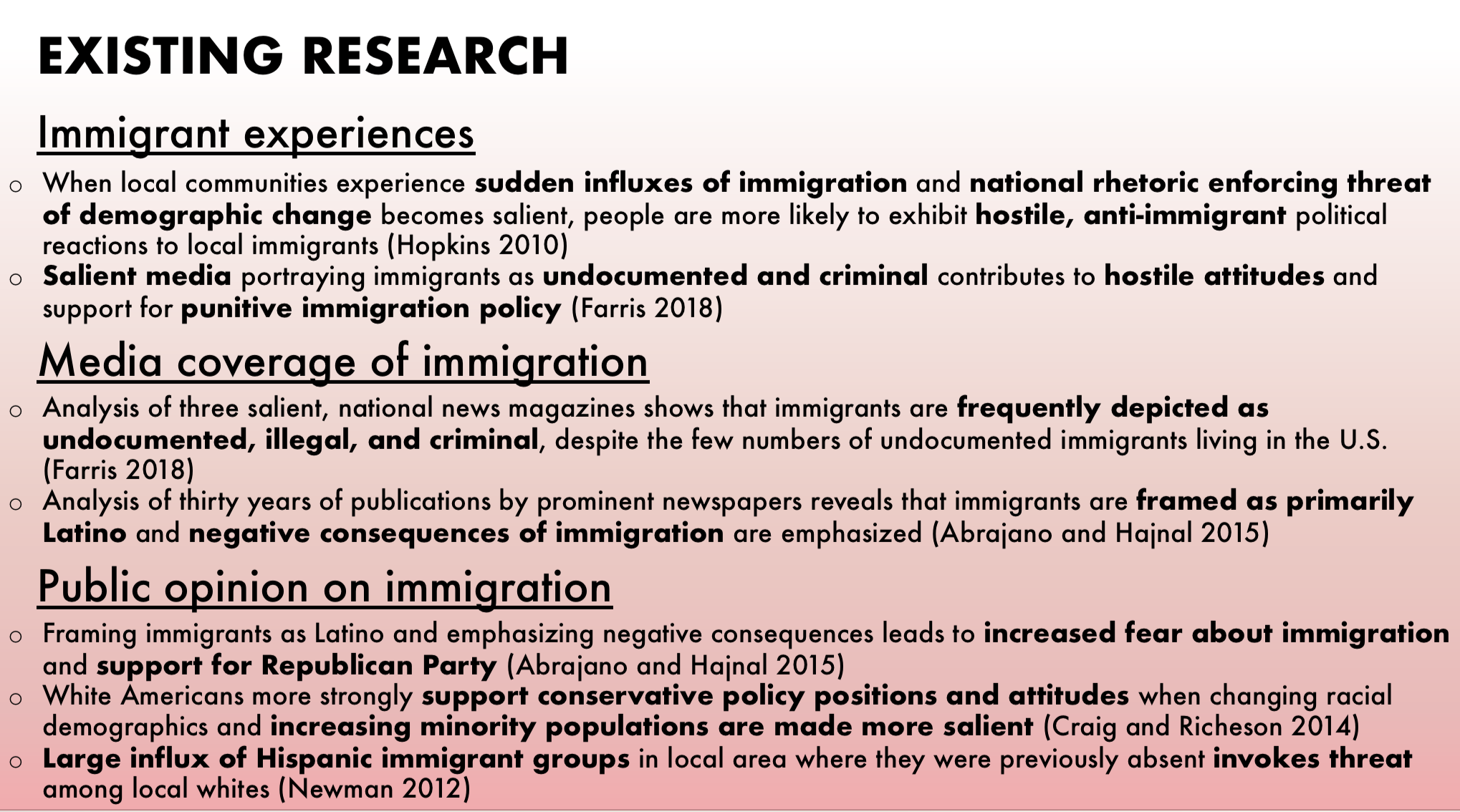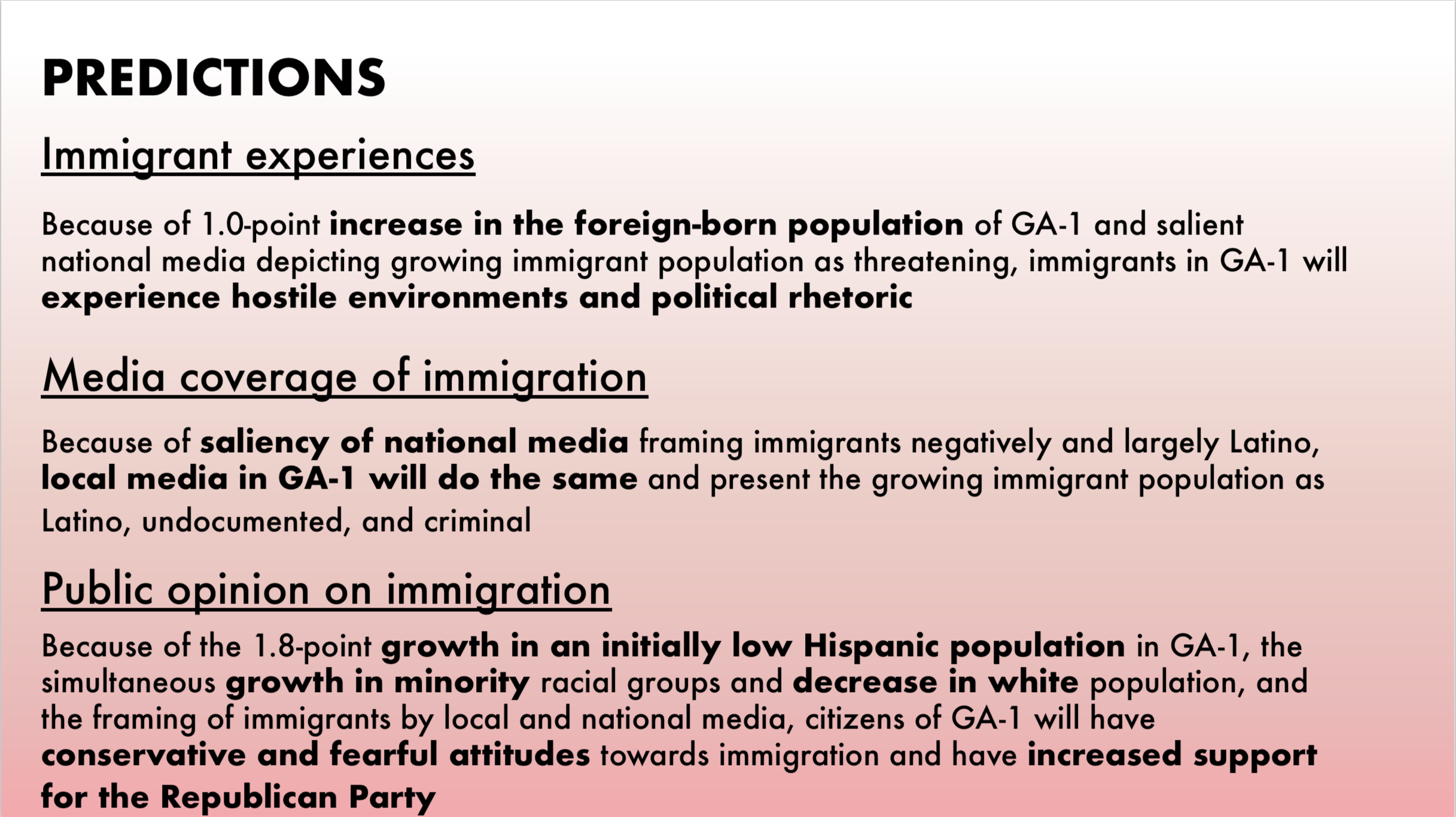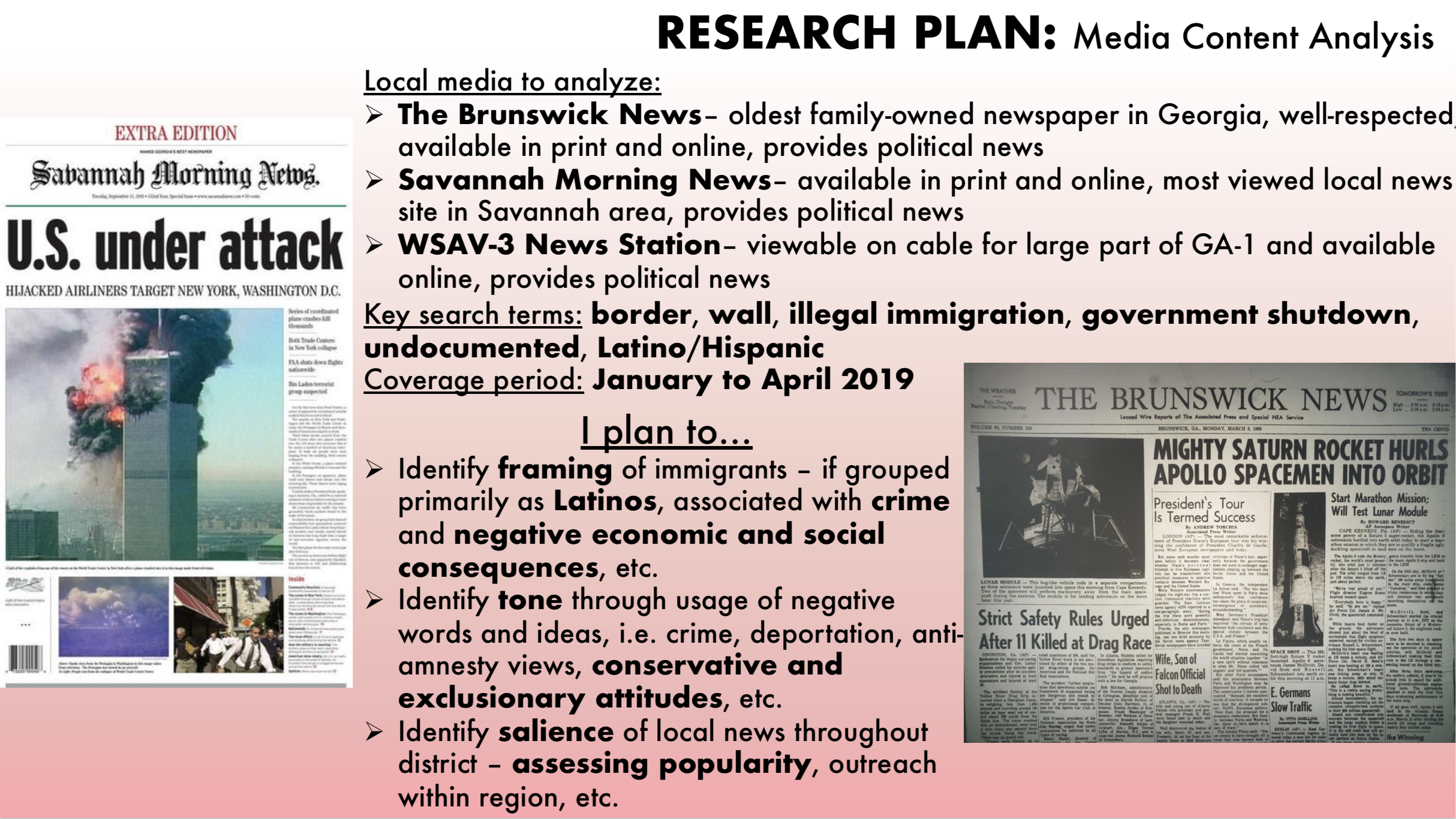Summary:
Buddy Carter’s GA-1 district has been a firmly Republican district with high native-born populations for over 10 years. Research demonstrates that such a strong Republican Party implies increased support from white citizens who are seeking anti-immigrant polices in response to growing numbers of immigrants and threatening depictions of immigration. Carter has responded accordingly by consistently sponsoring restrictive bills throughout his three terms as representative. However, these exclusionary perceptions and political actions only serve to isolate immigrants within the district and negatively affect the psychological health of young immigrants especially. In addition, further research presents that Latino voters, a quickly and steadily growing electorate, will act against threatening, anti-immigrant policies and rhetoric. The demographics of GA-1 reflect growing Latino and immigrant populations along with declining white and native-born populations. If he continues to support restrictive and exclusionary immigration politics, which fosters hostile political and social environments within the district, he risks losing support of the Republican Party and hindering the integration and overall well-being of an entire population group. As a representative, Carter should change along with his district in the interests of reelection and social welfare and offer support for permissive policies that encourage pro-immigrant attitudes like amnesty or advocacy for asylum-seekers.
Op-ed:
Latinos are making their voices heard at the polling booths. In recent years, Latino voter turnout has grown exponentially, allowing the population to not only increasingly involve themselves in politics but also make their political needs known. After the election of a president adamant about border security and notorious for his anti-Latino immigrant rhetoric, Latino are taking action through their vote, especially during local elections. The 2018 congressional elections saw unprecedented numbers of Latino and earnestly pro-immigrant candidates voted into office. Latino citizens have refused to sit on the sidelines during this current political climate and their efforts have not been unnoticed or in vain. They are projected to become the largest non-white electorate by the next presidential elections and seem to be primarily showing support for the Democratic Party. This is a powerful group of constituents that have already helped turn the House of Representatives to majority Democrat.
Georgia’s first congressional district, led by third-term representative Buddy Carter, has been firmly Republican for the past 25 years. However, the margin by which Carter defeated his Democratic candidate was much smaller in 2018 than it had been in recent years. As research will show, the anti-immigrant attitudes of a strong Republican party disrupt the psychological development of local young immigrants and immigrant integration into local society. If Carter continues to support restrictive immigration policies and alienate a growing Latino population in the district, Latino voters will respond accordingly and the strength of the party will continue to dwindle, which will be reflected by Carter being elected by smaller and smaller margins until he is unseated by a Democratic candidate.
How should Republican representatives like Buddy Carter respond to these recent electorate and political changes in order to maintain party strength and political influence?
As Marisa Abrajano’s and Zoltan Hajnal’s 2015 study explains, growth in the immigrant population combined with negative depictions of Latino immigrants as threatening in national news has led to more support for the Republican party by white Americans. This support has been reflected in GA-1 through Carter’s congressional sponsorship for policies restricting immigration, immigrant rights, and immigrants’ paths to citizenship. His political actions imply anti-immigrant rhetoric and attitudes that permeate local society and create unwelcoming and even hostile environments for immigrants. Young immigrants are especially impacted by social environments like these and restrictive policies, according to Hirokazu Yoshikawa’s 2016 article. Living in communities in which local politicians and media consistently express exclusionary views about immigrants causes these youths to feel socially isolated and discriminated against, which negatively affects their psychological health by sparking high levels of stress, worry, and feelings of hopelessness. They are unable to fully integrate into a society that rejects them and harmfully impacts their well-being.
But why should Carter care about the experience and integration of immigrants in his district? For one, the demographics of his district are changing. Within the past ten years, GA-1 has experienced an almost two percent growth in the Latino population, one percent increase in the foreign-born population, one percent decrease in the native-born population, and nine percent decrease in the white alone population, which is the only racial group with negative growth. Meanwhile, diminishing support for the Republican Party is indicated by recent election results. In 2018, Carter defeated Democrat Lisa Ring by only 13.4 points compared to the 2016 election during which he ran and won virtually unopposed. If, as a politician, Carter’s primary goal is reelection, then logically, he should begin to respond to the needs of his changing constituency and the increasing numbers of Latinos. Beyond motivations of reelection, Carter should be concerned about the well-being of immigrants in his districts and their ability to integrate, whether or not they are naturalized citizens. Overall social prosperity should be a priority for any congressman and if there are entire groups of people suffering and unable to succeed and contribute to their communities, then this prosperity is compromised. In addition, when groups have felt marginalized and isolated historically, they tend to react through protests, demonstrations, and other forms of civil unrest.
Carter’s future reelections are also threatened by Latino voters. The negative rhetoric and support of restrictive policies illicit reactionary, political responses from Latinos, as Ariel White’s 2016 study argues. She finds that groups are mobilized to react politically to threatening policies, even if the policies do not affect them directly. Latinos can act against anti-immigrant laws and politics without being immigrants themselves by going to the polls and voting for candidates with more inclusive and pro-immigrant promises and rhetoric, who would most likely be members of the Democratic Party. The effects and influence of the Latino vote against a Republican representative like Carter would be exacerbated by GA-1’s growing Latino population and electorate.
In order to maintain strong support for the Republican Party and sustain inclusivity and integration of Latino and immigrant population groups, Buddy Carter should ease his firmly restritionist stance on immigration and offer advocation for asylum-seekers and amnesty. This will serve to counter anti-immigrant attitudes within the district and Carter’s political actions, allowing for immigrants to feel less isolated and unwelcome. Young immigrants will be better off mentally and psychologically and the possibility of protest and civil unrest will be tempered. As Carter begins to reflect the needs of the changing demographics of his district and sponsor bills that are less strict on immigration, Latino voters will be less inclined to vote against him. This country has seen to the power of a growing Latino electorate in recent elections and will continue to bear witness within the upcoming years. If Buddy Carter wants to keep the voting margins comfortably large between him and his Democratic counterparts, he will reevaluate and reconsider his support of anti-immigrant bills and views.
